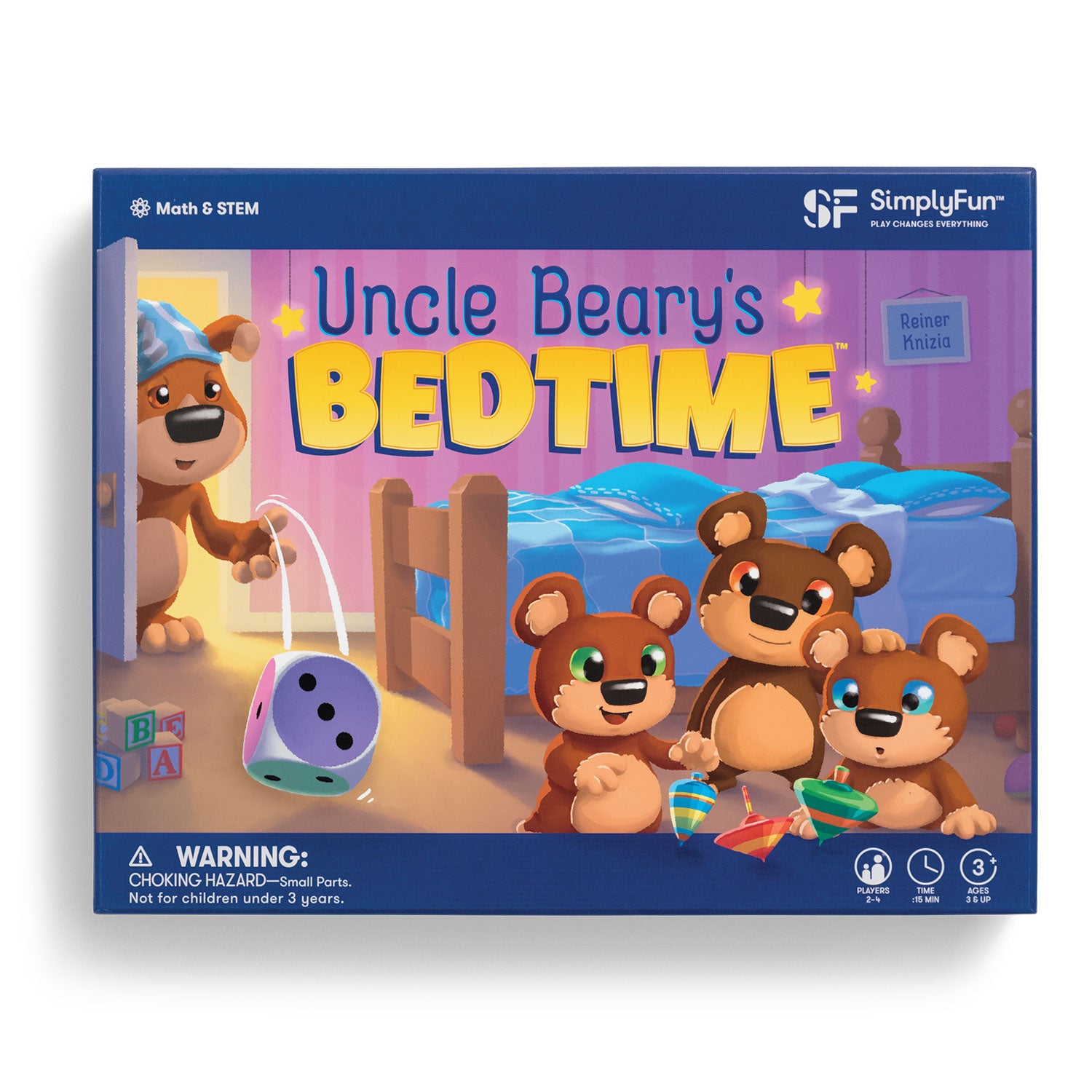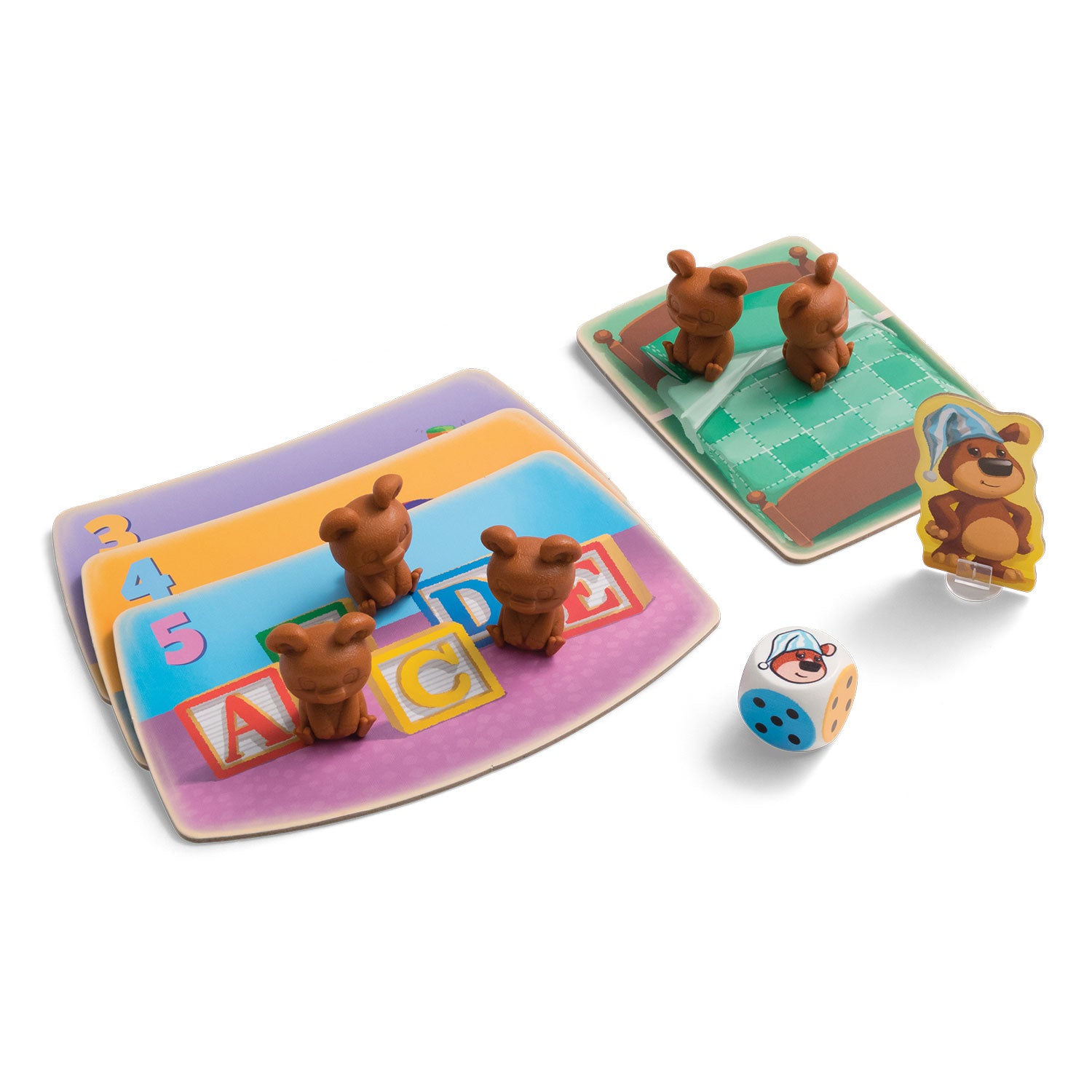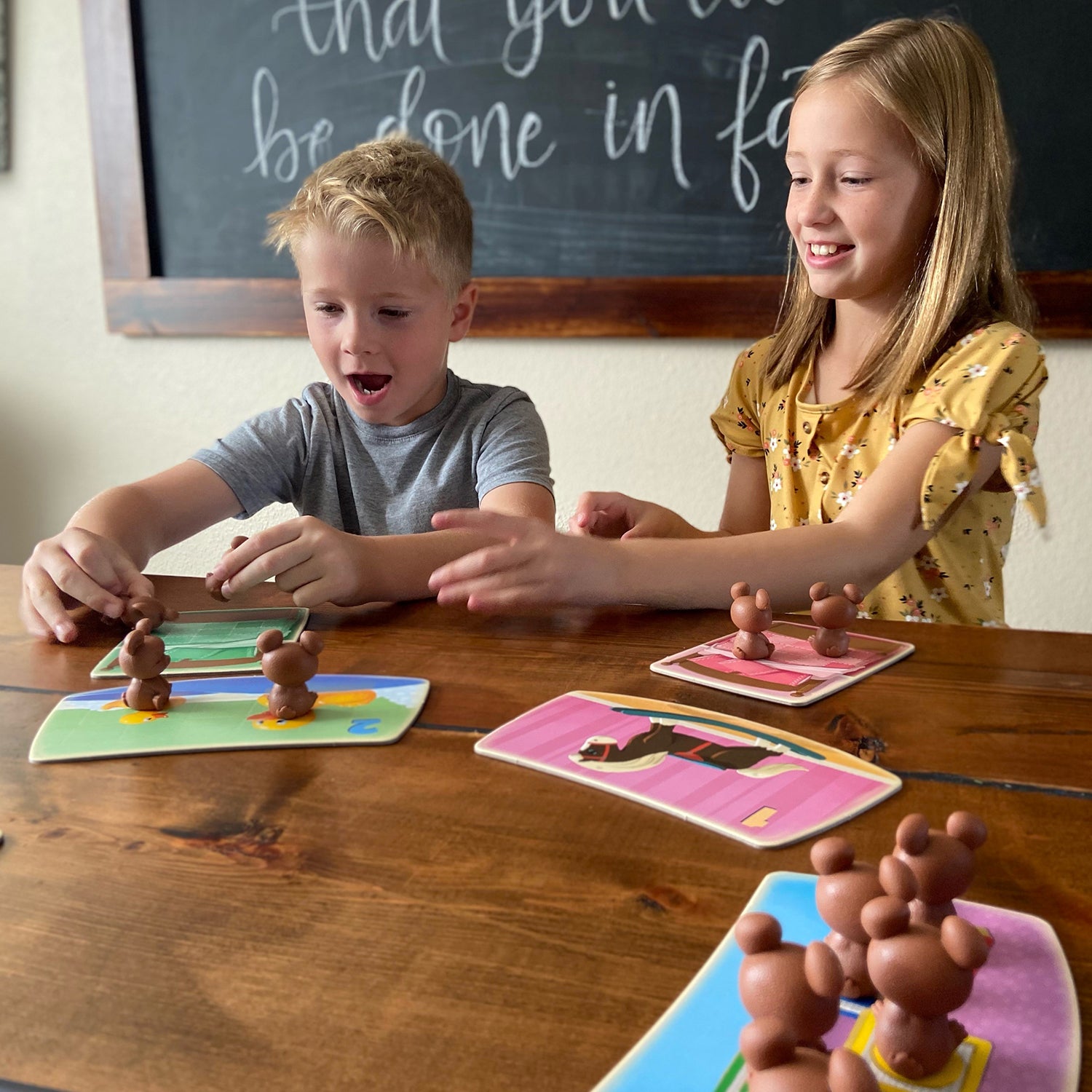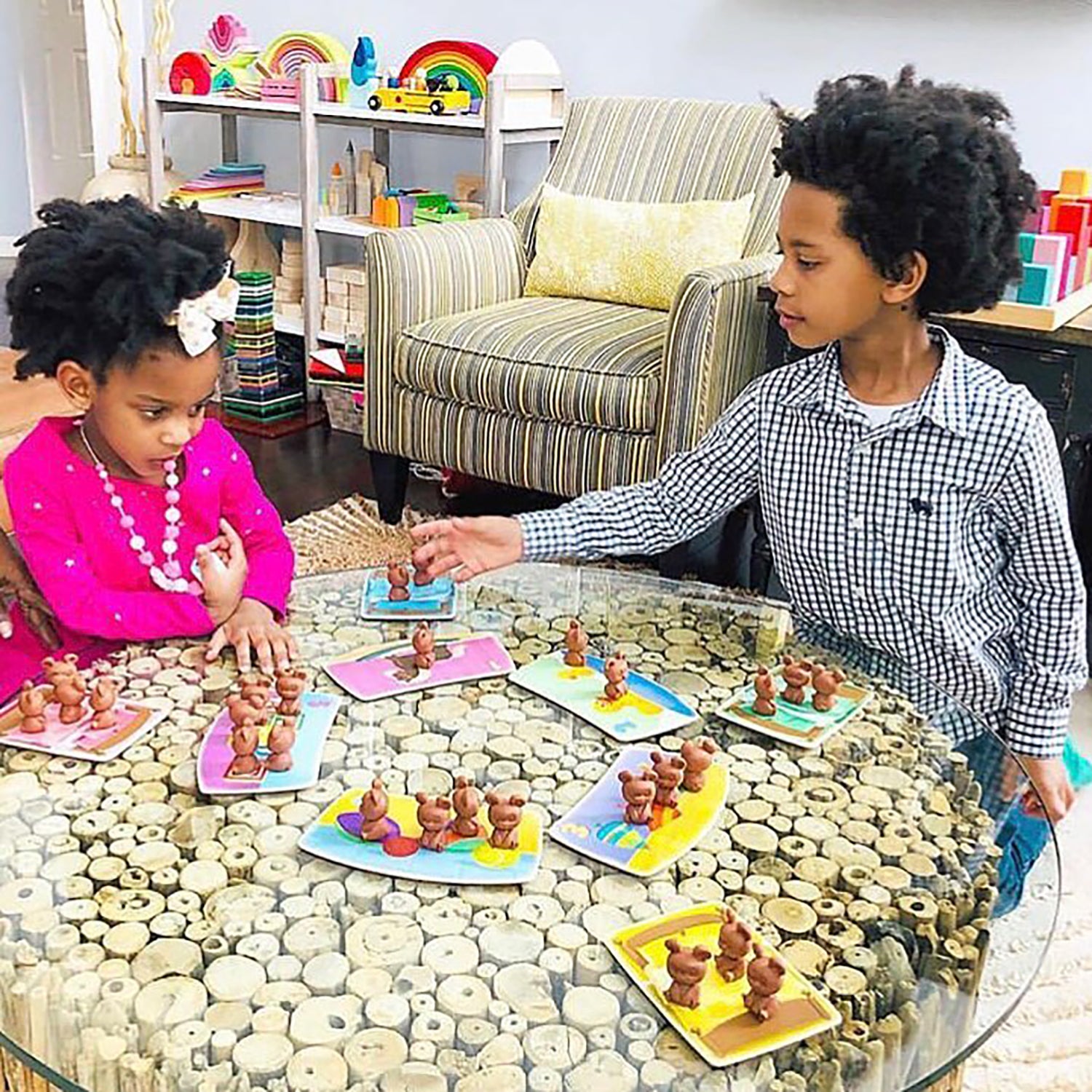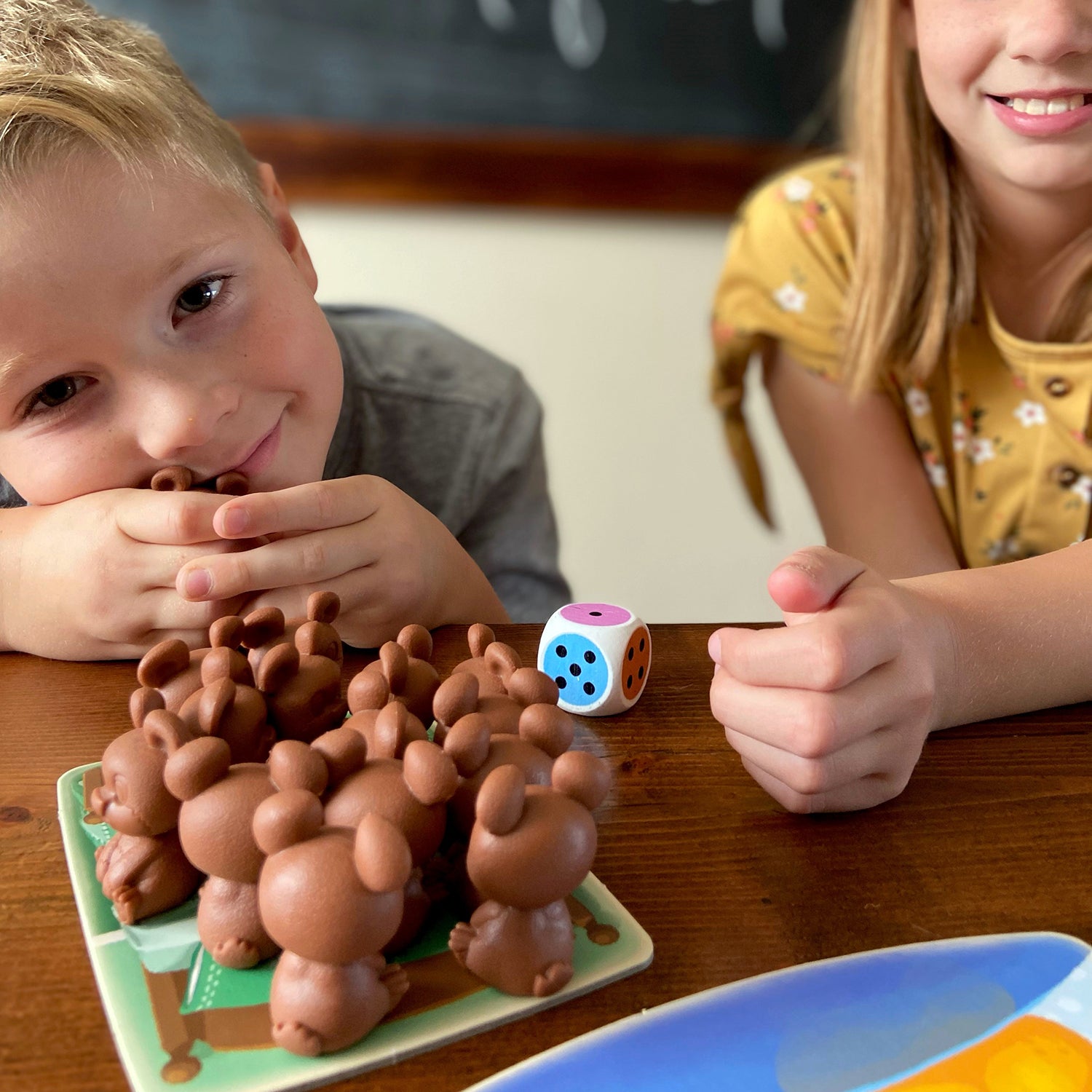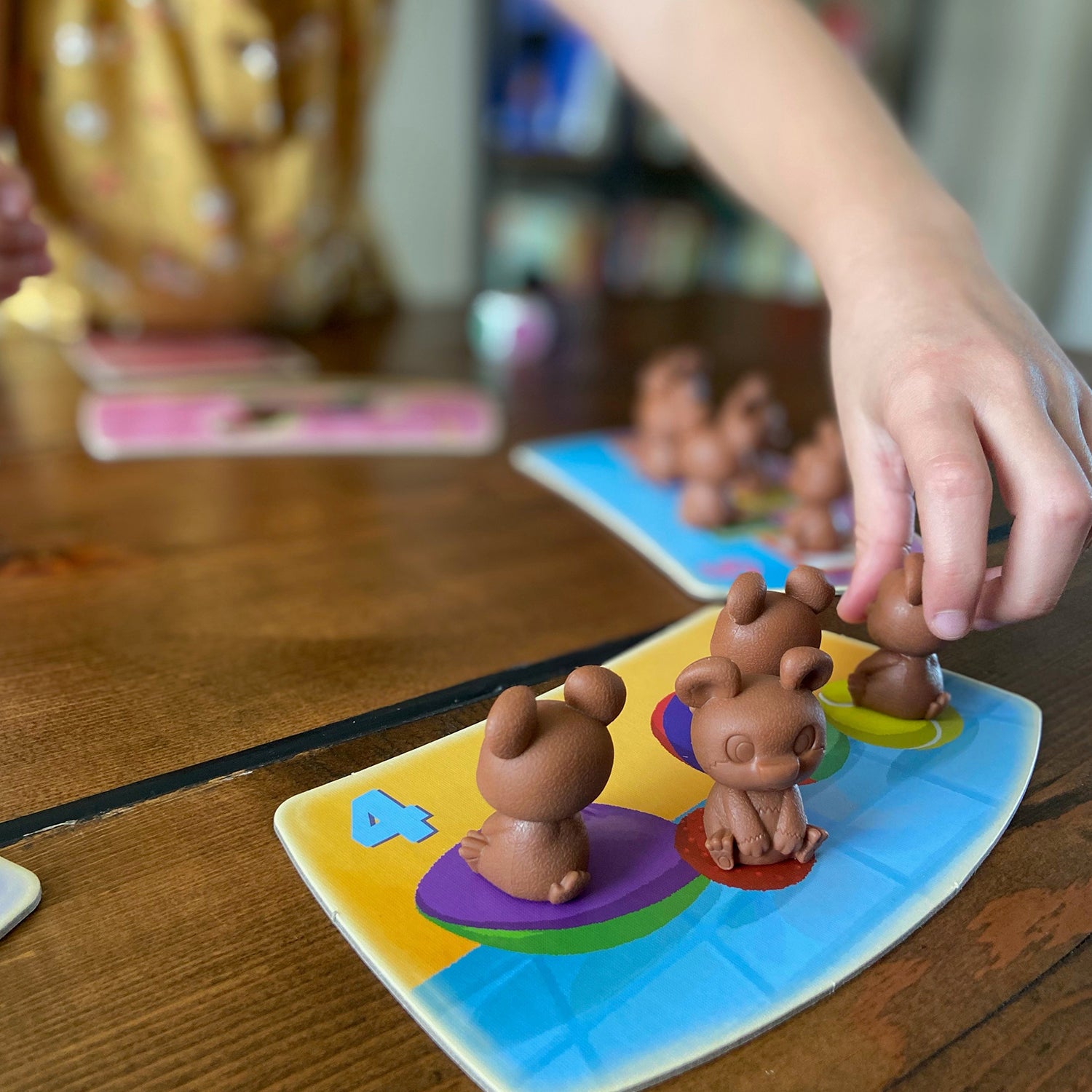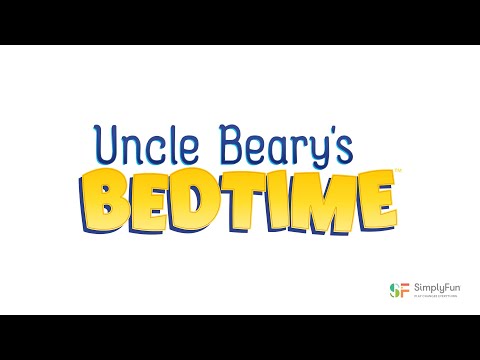Uncle Beary's Bedtime
Uncle Beary's Bedtime
2-4 players • 15 min • 3 & up
Focus: Early Counting
Couldn't load pickup availability
Uncle Beary is trying to get the bear cubs to go to bed. Players are helping by taking turns rolling the die. The die roll determines if a players will move the bear cubs from a toy tile to their bed tile or from their bed tile back to a toy tile. The player with the most cubs on their bed tile at the end of the game wins.
Skills: Counting, Focus and Self Control
Game Includes
Game Includes
- 27 Bear Cubs
- 5 Toy Tiles
- 4 Bed Tiles
- 1 Uncle Beary Pawn
- 1 Six-Sided Die
- 1 Rules Booklet
Share
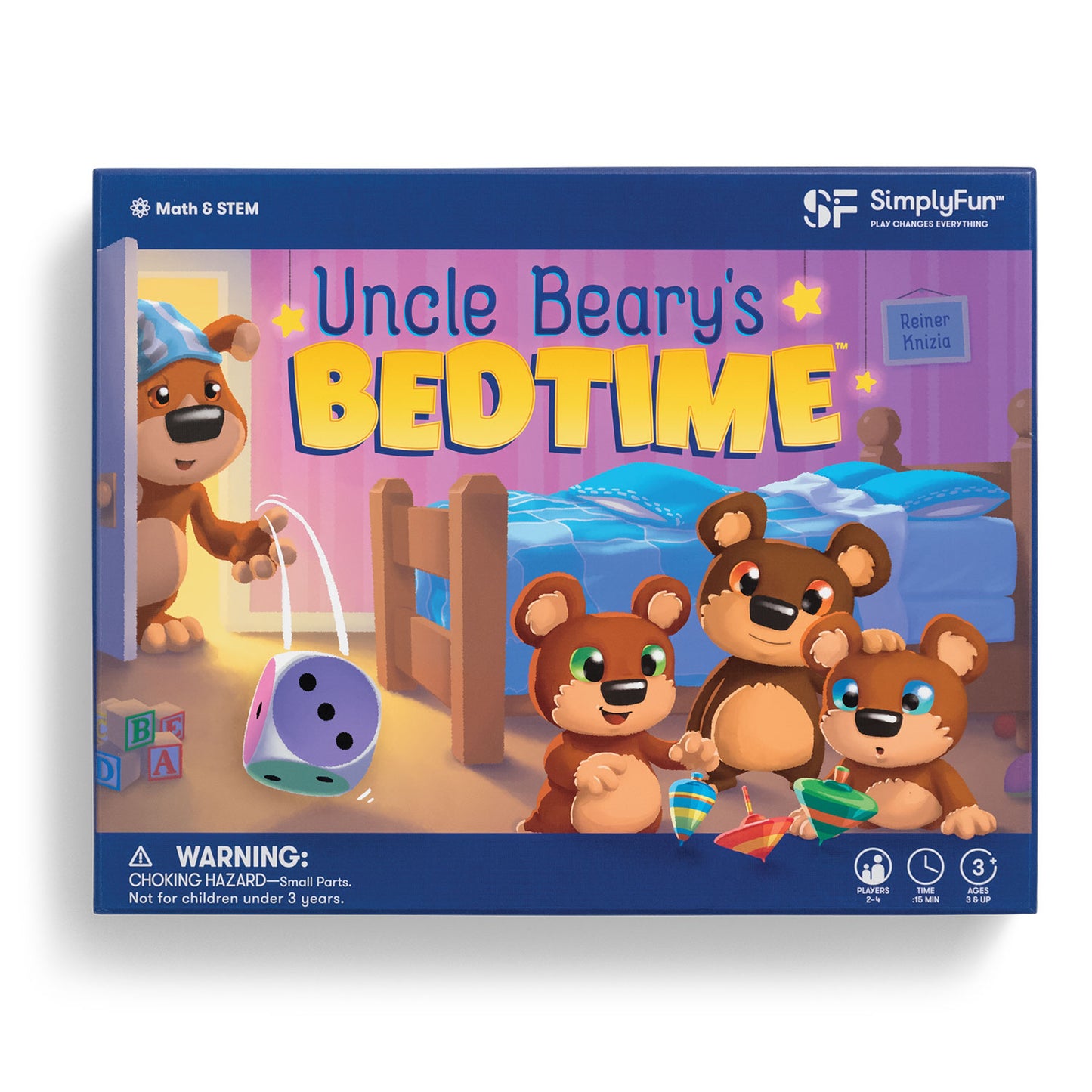
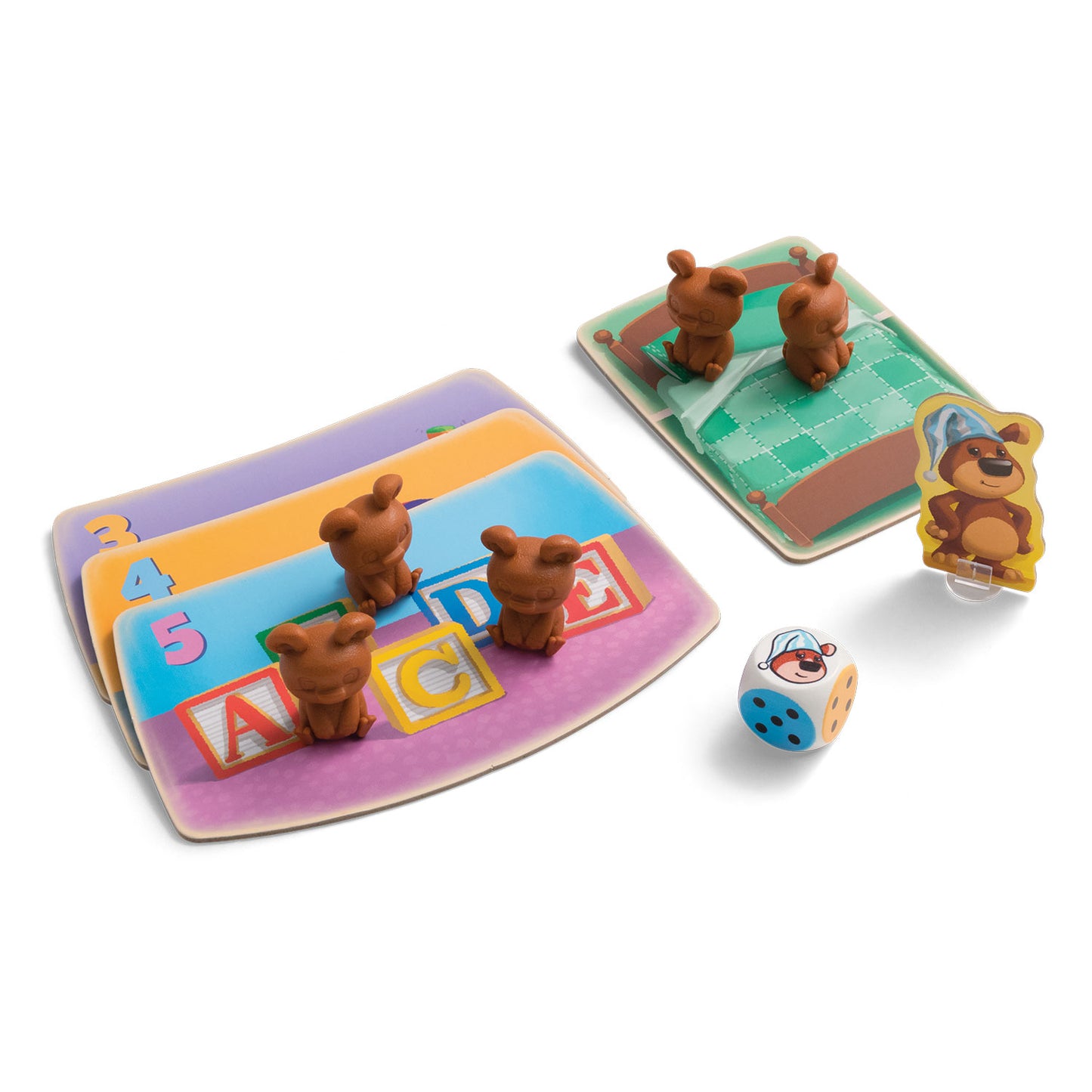
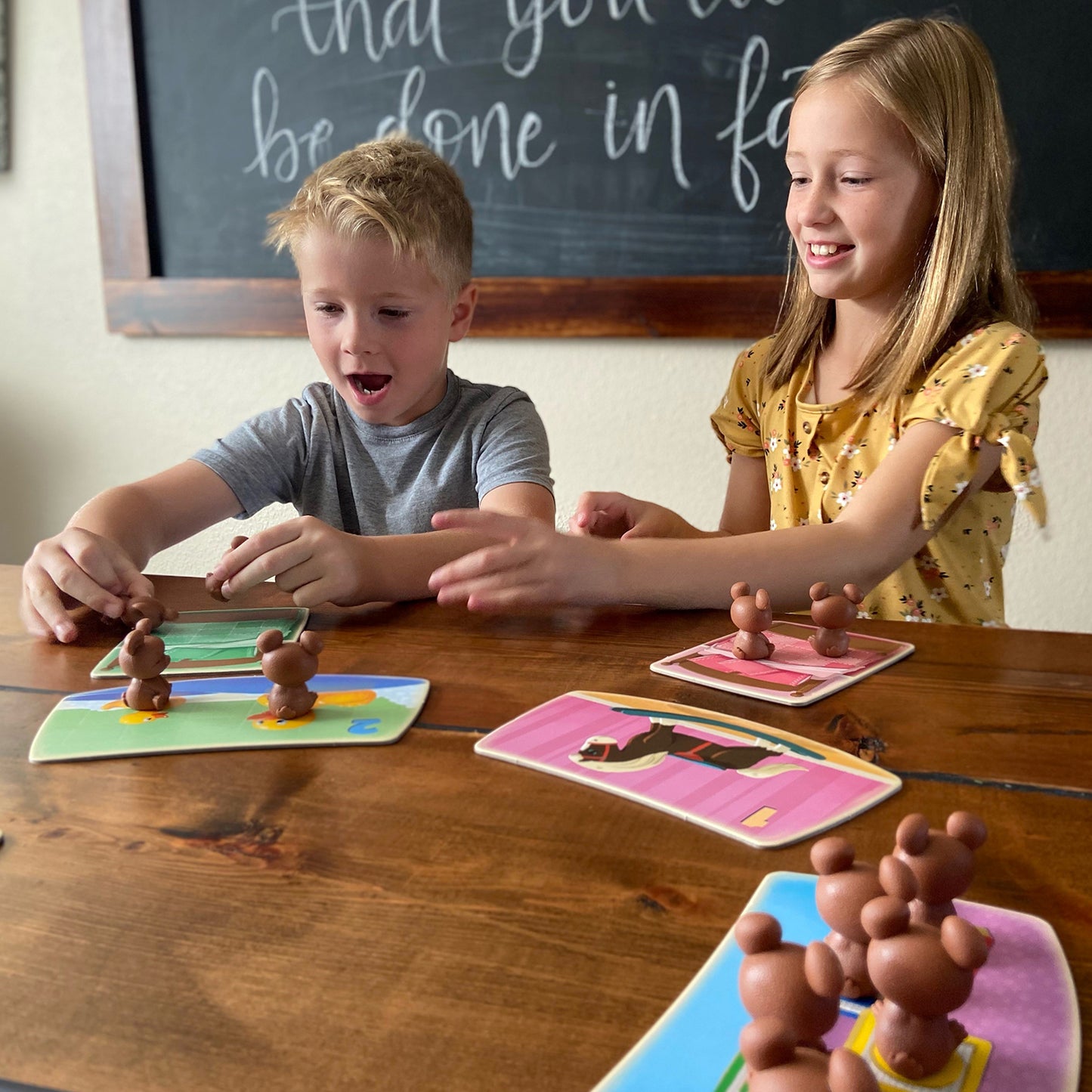
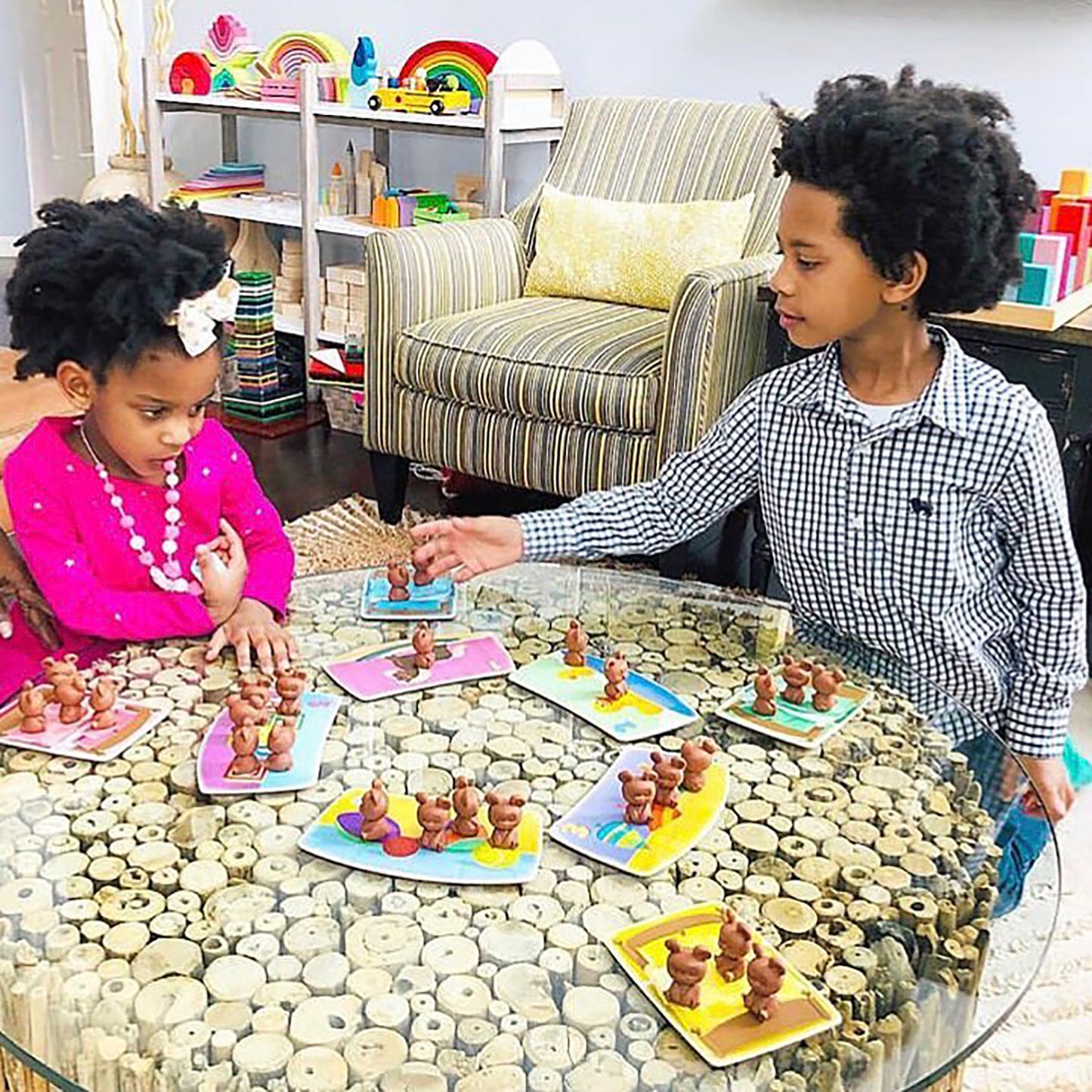
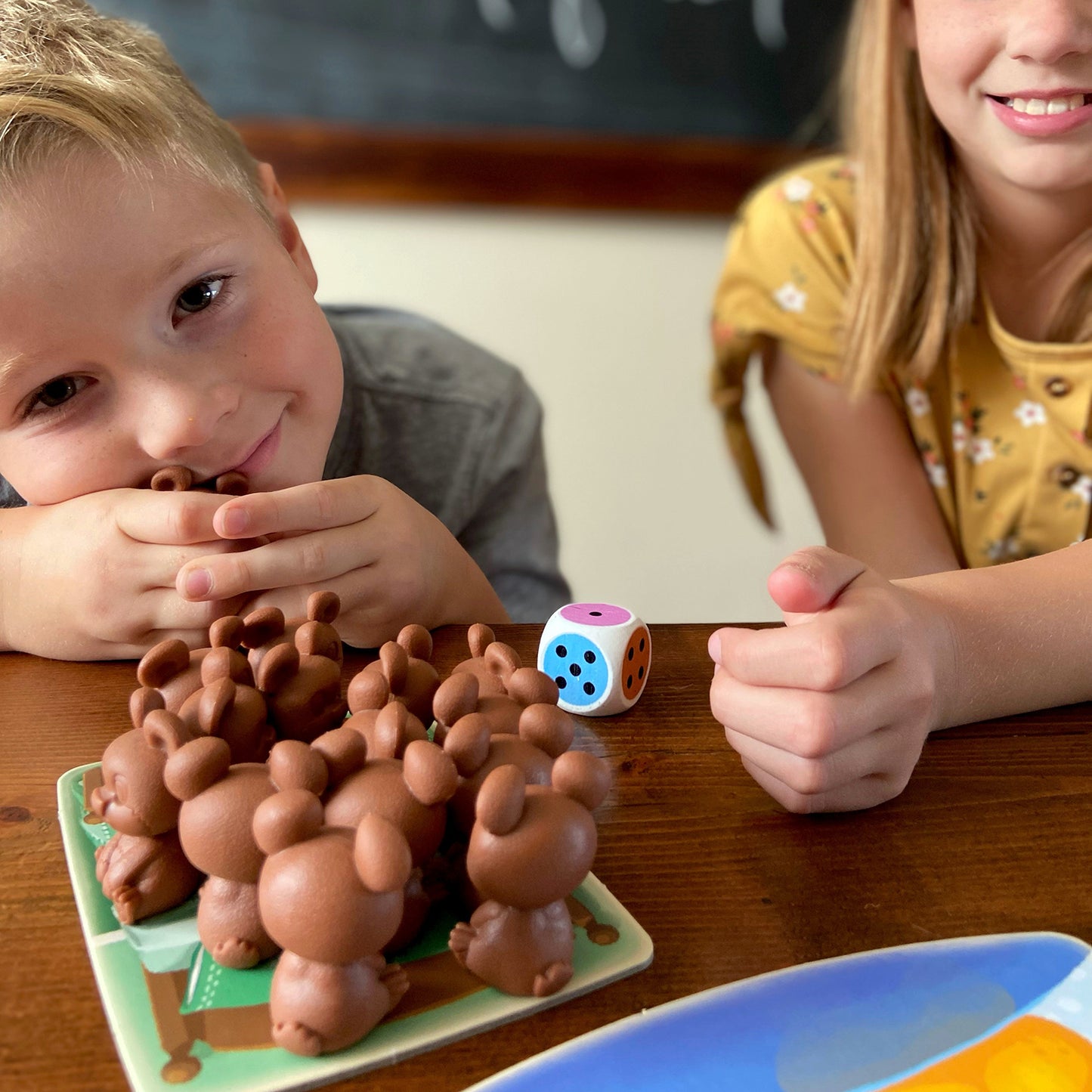
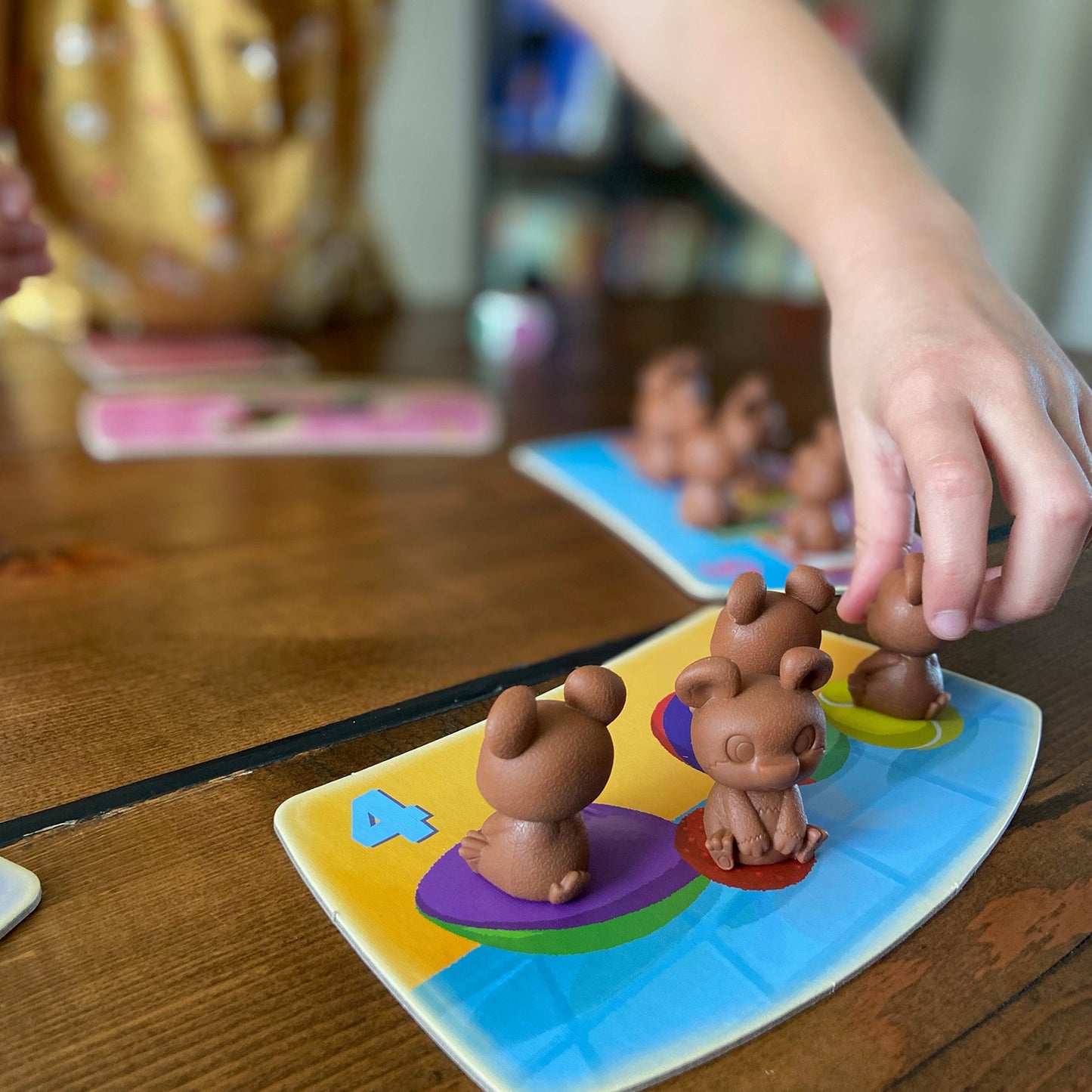

Collapsible content
How to Play
Educational Standards
Core Standard*: Math
- Math
- Know number names and the count sequence: Grade Level K
- Count to tell the number of objects.: Grade Level K
- Counting and Cardinality
Skills
Explore
What Does Child Do To Use Skill In The Game?
There is some exploring as players look for at the colors and pips on the die to compare with the colors and numbers on the toy tiles.
How Parents Can Assist Learning
If younger children are having challenges with comparing the pips on the die with the numerals on the toy tiles, encourage the children to focus on looking for matching colors between the die and the toy tiles.
Learning Implications and Educator Support
Uncle Beary's Bedtime gives children an opportunity to learn to count and compare objects to numerals. If younger children are having challenges with comparing the pips on the die with the numerals on the toy tiles, encourage the children to focus on looking for matching colors between the die and the toy tiles.
Determine
What Does Child Do To Use Skill In The Game?
Players must determine if where is a match between the die and a toy tile, and whether to take or give bear cubs based on the rules of the game.
How Parents Can Assist Learning
While learning the game, children may need to be reminded of the rules in order to know whether to take bear cubs from the toy tiles or other players, or to place a bear cub on a toy tile.
Learning Implications and Educator Support
Uncle Beary's Bedtime is good for practicing one-to-one correspondence and basic decision-making. While learning the game, children may need to be reminded of the rules in order to know whether to take bear cubs from the toy tiles or other players, or to place a bear cub on a toy tile.
Compare
What Does Child Do To Use Skill In The Game?
Comparing happens simultaneously with exploring and determining as players figure out which toy tile matches the roll of their die.
How Parents Can Assist Learning
If younger children are having challenges with comparing the pips on the die with the numerals on the toy tiles, encourage the children to focus on looking for matching colors between the die and the toy tiles.
Learning Implications and Educator Support
Uncle Beary's Bedtime gives children an opportunity to learn to count and compare objects to numerals. If younger children are having challenges with comparing the pips on the die with the numerals on the toy tiles, encourage the children to focus on looking for matching colors between the die and the toy tiles.
Practice
What Does Child Do To Use Skill In The Game?
Playing Uncle Beary's Bedtime allows children to practice counting with one-to-one correspondence.
How Parents Can Assist Learning
Encourage children to touch or pick up a bear cub for each one they are counting to physically reinforce the one-to-one correspondence.
Learning Implications and Educator Support
One-to-one correspondence is an important early math skill. Encourage children to touch or pick up a bear cub for each one they are counting to physically reinforce the one-to-one correspondence.
*Data compiled from CCSSI ELA Standards, WA Science Standards, and Washington Social Studies Standards
Special Needs
Cognitive
Suggestions for How to Modify Play Experience
Eliminate the toy tiles that have four or five toys. This will enable the child who has a limited understanding of numbers to play the game. The child may still need help counting the bears on the beds if they exceed four or five.
Use a visual guide to help children understand pips, object number, and number symbols. Have a paper guide for each number. On the guide have a picture of a pip, a picture of an object on a tile, and a number symbol for that number. Help the child to find the matching pips first, then the pictures, then the symbol.
Communication
Suggestions for How to Modify Play Experience
Children who have communication concerns can play the game without needing to talk, but communication should be encouraged. Ask children to label the number they see on the dice, count the toys on a tile or bed, and communicate their feelings if they receive or have to give bears to other players.
Ask children to name the toys on the toy tiles where they are taking or placing bear cubs. Also, ask them to describe where the bears on the toys are going (example "going to bed").
Sensorimotor
Suggestions for How to Modify Play Experience
The bear cubs in the game should not be too hard to maneuver, but placement of several on a tile may be more difficult. Use velcro circles (available in a hardware or art store) and place the bottoms on the toy tiles and bed tiles, and the corresponding half on the bears. This will give players a "sticking point" that is visually clear and won't slide between items, making counting with one-to-one correspondence easier.
Social Emotional/Behavioral
Suggestions for How to Modify Play Experience
The game requires shifting attention to several aspects of the game: Beary, the die, the toy tiles, and the beds. This may be difficult for children with attention limitations. For these children, walk them through each step of the game. "Where is Beary?" " What number is on the die?" " Which toy tile should we look at?" "Do all the toys have a bear on them?" What does that mean?" Etc. Such guidance may reduce stress and help the child focus on each step of a turn.
When a player needs to give up a bear cub to a tile or another player, this may be stressful. Let the child make the moves without being told by another player what to do. For example, "You said there are not enough bears for the toys on this tile. What does that mean? That's right. You need to put one bear on the toys that needs one. The toys each need a bear to play with it. Thank you for giving the toy a playmate!"
Vision
Suggestions for How to Modify Play Experience
Children who are blind or vision impaired may find this game too challenging, as there are multiple visual aspects to attend to.
Hearing
Suggestions for How to Modify Play Experience
Children with hearing impairments who can learn the rules by watching or using sign language should be able to play the game.
*Data compiled from CCSSI ELA Standards, WA Science Standards, and Washington Social Studies Standards
Autism
Autism Strengths & Interests
Short Summary of Strengths & Interests
- Counting with one-to-one correspondence
- Sequencing actions
- Resilience
Is good at matching visual items
Is This Game Appropriate? Yes
Description
Players need to match pips on a die to written number or number of items
Has a good memory for sensory details, including visual, touch, taste and smell
This game is not appropriate
Has a good memory for words, phrases and dialouge
This game is not appropriate
Has a good memory for pictures, numbers and patterns
Is This Game Appropriate? Yes
Description
Players need to remember the number on the die and then see if the matching toy tile has all of its bears.
Likes to put things in order or a sequence
Is This Game Appropriate? Yes
Description
Children with autism often want to see order. If a toy tile is missing one or more bears, this will be noticed and the child will want to correct the "problem." If the toy tile is missing more than one tile, the child may want to add more bears from their bed to make the tile ordered. The adult can help the child understand that the rules of the game say that they only need to add one bear. Emphasize that the more bears on their beds, the greater the chance of winning.
Learns through visualizing or "replaying" actions in their mind
Is This Game Appropriate? No
Description
There is no real strategy in the game, so players cannot benefit from mentally recreating previous moves.
Likes activities with rules, such as math and phonics
Is This Game Appropriate? Yes
Description
This game is primarily about counting and involves clear, simple rules regarding when to give and take bears.
Is very concrete and literal
Is This Game Appropriate? Yes
Description
The game is concrete with bears matched to images of toys and then "going to bed." The child with autism may not understand having to give bears to other players for no concrete reason. If this happens, adults can explain the "rules" of the game.
Learns in small "chunks" (for example, phone numbers are 3 chunks of number xxx-xxx-xxxx that are combined together)
This game is not appropriate
Is good at nonverbal reasoning and logic
This game is not appropriate
Likes spatial problem solving
This game is not appropriate
Can read well with good vocabulary, though may not fully comprehend content
This game is not appropriate
Likes to use and has good fine motor skill
This game is not appropriate
Likes established routines or set ways of doing things
Is This Game Appropriate? Yes
Description
If players with autism can learn the rules of the game, they may enjoy the pattern of play.
Likes manipulating, constructing or building things
This game is not appropriate
Likes to use and has good musical abilities
This game is not appropriate
Likes to use and has good drawing skills
This game is not appropriate
Autism Special Considerations
Appears to ignore other's communication and/or has difficulty giving eye contact to a communication partner
Is This Game Appropriate for Child with Characteristic? Yes
Can Child with Characteristic Play Game w/o Modification? Yes
Strategies for Developing Compensatory Skills:
Eye contact is not needed, but players should pay attention to what is happening on other players'bed tiles.
Has difficulty understanding complex verbal directions
Is This Game Appropriate for Child with Characteristic? Yes
Can Child with Characteristic Play Game w/o Modification? No
Strategies for Developing Compensatory Skills:
Children with autism may need support in a step-by-step approach, as each turn involves attention to more than one aspect of the game.
Uses vocabulary inaccurately or demonstrates echolalia (repeating another's speech)
Is This Game Appropriate for Child with Characteristic? Yes
Can Child with Characteristic Play Game w/o Modification? No
Strategies for Developing Compensatory Skills:
If the child's echolalia interferes with the game, other players can use "self talk," or words about what they are doing to guide the discussion. For example, a player says, " I rolled a five, I go to this toy tile," The child with autism restates this. This does not interfere with the game. Encourage the player to state, "Yes. I'm here on the tile with four toys, etc." This type of repetition only reinforces learning the rules of the game. Players can encourage the child with autism to help them with their turn. For example, "Is there a bear for each toy?" When the child with autism repeats the question, encourage the player to answer it. "Yes, there is one bear on each toy." This approach makes the child's echolalia functional and teaches the game at the same time.
Gets stuck repeating a verbal topic or physical actions and/or has difficulty attending to others' actions or topic.
Is This Game Appropriate for Child with Characteristic? Yes
Can Child with Characteristic Play Game w/o Modification? Yes
Strategies for Developing Compensatory Skills:
Guide the player's thinking by using meaningful phrases related to the game. When the child with autism keeps repeating a phrase, start by restating the phrase. Then on the next conversational turn, state something different, modeling a new, meaningful phrase. For example, the child repeatedly states, "Go to bed, go to bed." Say, "Yes. Time for this bear to go to bed." Then state the next action.
Has difficulty producing speech/communication
Is This Game Appropriate for Child with Characteristic? Yes
Can Child with Characteristic Play Game w/o Modification? Yes
Strategies for Developing Compensatory Skills:
Communication is not needed, but should be encouraged.
Has difficulty sequencing multi-step actions and/or doing complex abstract tasks
Is This Game Appropriate for Child with Characteristic? Yes
Can Child with Characteristic Play Game w/o Modification? No
Strategies for Developing Compensatory Skills:
Multiple steps are involved in each turn. The adult can guide by taking one step at a time. "What number is on the dice? Which toy tile should you look at? Now, how many bears are on the toys?" Once the child has played the game several times, they may remember the sequence.
Demonstrates difficulty initiating and maintaining social interactions
Is This Game Appropriate for Child with Characteristic? Yes
Can Child with Characteristic Play Game w/o Modification? Yes
Strategies for Developing Compensatory Skills:
The child can focus on the turns and the items on the tiles. Social interaction is not needed, but should be encouraged.
Acts out or demonstrates avoidance behaviors when frustrated, overwhelmed, or needs more sensory input.
Is This Game Appropriate for Child with Characteristic? Yes
Can Child with Characteristic Play Game w/o Modification? No
Strategies for Developing Compensatory Skills:
The child may become frustrated if the sequence is too difficult or they have difficulty recognizing numbers. Provide opportunities for sensory input or self-calming. Fidget toys or a preferred action in between turns may be helpful.
Has short attention span for non-preferred activities
Is This Game Appropriate for Child with Characteristic? No
Can Child with Characteristic Play Game w/o Modification? No
Strategies for Developing Compensatory Skills:
If numbers and counting are not a preferred activity, Uncle Beary's Bedtime may not be a good match for the child.
Needs sameness or consistent routines and/or has difficulty with transitions from one activity to another
Is This Game Appropriate for Child with Characteristic? Yes
Can Child with Characteristic Play Game w/o Modification? No
Strategies for Developing Compensatory Skills:
Play with the little bears before the game as a transition. Then review the steps of each turn with the players to remind them of the pattern of play.
Has difficulty understanding others'feelings, intentions, and the reasons for others'actions.
Is This Game Appropriate for Child with Characteristic? Yes
Can Child with Characteristic Play Game w/o Modification? Yes
Strategies for Developing Compensatory Skills:
Uncle Beary's Bedtime does not require understanding other players thinking or feelings.
*Data compiled from CCSSI ELA Standards, WA Science Standards, and Washington Social Studies Standards
Extended Play
Extra Ways to Play the Game
For younger children who do not know how to count to 4 or 5, eliminate those toy tiles.
Materials Needed
No additional materials needed.
Developmental Benefits
Modify the game to match the child's developmental level. If the game is too high level, the players will become frustrated and not want to play.
Extra Ways to Play the Game
Use the game for dramatic play. Children can choose the toys their bears want to play with, engage with other players' bears, and put their bears to bed. Children will make up their own action and stories in their dramatic play. The bears, toy tiles and bed tiles serve as the stimulus for their imaginations.
Materials Needed
Add small cups, blocks, and play dough and other items for children to add to their dramatic play with the bears.
Developmental Benefits
Dramatic play is a rich way for children to practice language, story telling, and cooperation. Play may start off very simply, by putting the bears to bed, but with a little encouragement, children can build more complex, imaginative stories with and about the bears.
*Data compiled from CCSSI ELA Standards, WA Science Standards, and Washington Social Studies Standards
Collapsible content
How to Play Video & Transcript
A game where you help Uncle Beary manage to get his nieces and nephews tucked into their beds for the night.
You can play Uncle Beary’s Bedtime with 2 to 4 players, ages 3 and up.
Uncle Beary’s Bedtime is good for developing Counting skills, as players roll the die and count the dots to know which toy tile to look at, as well as counting the bear cubs playing in each room.
Uncle Beary’s Bedtime also helps with Focus and Self-Control. Players take turns rolling the die and patiently wait as other players move the cubs.
To set up, place the five toy tiles in the middle of the play area, arranging them in a circle, starting with number one and ending at number 5.
Place the little bear cubs on the toy tiles, one cub for each individual toy shown.
Place Uncle Beary next to the number one toy tile.
Each player chooses a bed tile and the remaining 12 bear cubs are divided evenly between all players. Any leftover cubs should be placed back in the box. Place the cubs on the bed tiles.
Players take turns rolling the die. Based on the roll, players will either move the bear cubs from a toy tile to their bed tile or from their bed tile back to a toy tile. Uncle Beary will make five moves through the house, trying to get the cubs to go to bed. The player with the most cubs on their bed tile at the end of the game wins!
On your turn, roll the die.
If you roll a side showing dots, count the dots on top. Look at the corresponding toy tile and do one of the following things:
a. If all the toys have bear cubs placed on them, then it’s bedtime for those bears. Collect all the cubs and move them to your bed tile.
b. If one or more of the toys on the toy tile does not have a bear cub on it, you must place one of the cubs from your bed onto that toy.
If you currently do not have any cubs, then nothing happens.
If you roll the picture of Uncle Beary, move the Uncle Beary pawn to the next room in the house. As a reward for helping Uncle Beary, you receive one bear cub from each of the other players, if they have one.
No bear cubs are collected from the toy tiles when you move the Uncle Beary pawn.
After rolling the die and taking an action, your turn ends. And you pass the die to the next player.
The game ends when Uncle Beary is rolled for the fifth time, moving him from the number five tile back to the number one tile. The player who rolled Uncle Beary the last time receives one final bear cub from each player. Then count all your bear cubs. The player with the most cubs in their bed wins!
In the case of a tie, the tied players roll the die and the highest number wins. When this happens Uncle Beary counts as six.
Playtime may be over for the little bear cubs, but you can count on having fun with Uncle Beary’s Bedtime again and again!
- Choosing a selection results in a full page refresh.
- Opens in a new window.

